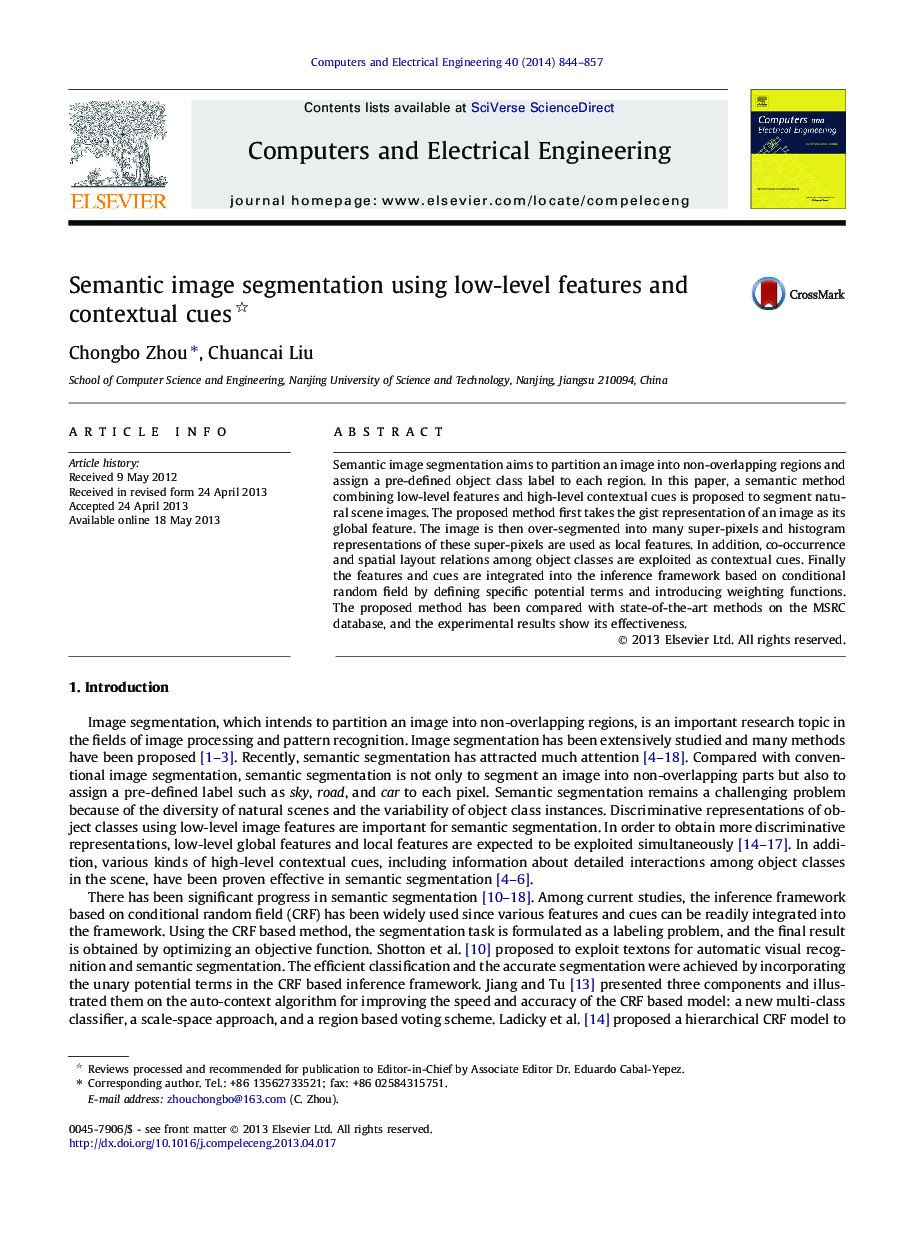| Article ID | Journal | Published Year | Pages | File Type |
|---|---|---|---|---|
| 454956 | Computers & Electrical Engineering | 2014 | 14 Pages |
•Gist representations and super-pixel histograms are used as low-level features.•Object co-occurrence and spatial layout relations are used as contextual cues.•Low-level features and contextual cues are fused in the inference framework.
Semantic image segmentation aims to partition an image into non-overlapping regions and assign a pre-defined object class label to each region. In this paper, a semantic method combining low-level features and high-level contextual cues is proposed to segment natural scene images. The proposed method first takes the gist representation of an image as its global feature. The image is then over-segmented into many super-pixels and histogram representations of these super-pixels are used as local features. In addition, co-occurrence and spatial layout relations among object classes are exploited as contextual cues. Finally the features and cues are integrated into the inference framework based on conditional random field by defining specific potential terms and introducing weighting functions. The proposed method has been compared with state-of-the-art methods on the MSRC database, and the experimental results show its effectiveness.
Graphical abstractFigure optionsDownload full-size imageDownload as PowerPoint slide
